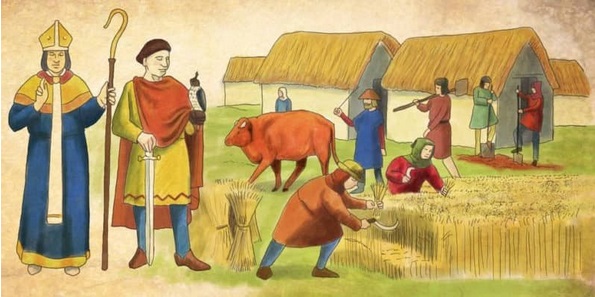The feudal economy developed during the Middle Ages in Europe and was based on agriculture and land work.
Peasants were the main food producers and worked on the land of feudal lords in exchange for protection and shelter.
Agricultural production was mainly used to meet the needs of the local population and there was no developed commercial market.

Features
The main characteristics of the feudal economy include:
- Agriculture was the main economic activity and was used to meet the needs of the local population.
- Agricultural production was controlled by the feudal lords, who owned land and natural resources.
- The peasants worked on the lands of the feudal lords in exchange for protection and shelter.
- The feudal economy was highly hierarchical, with the feudal lords at the top and the peasants at the grassroots.
- There was no developed commercial market and agricultural production was mainly used to meet the needs of the local population.
- Production and trade were limited and regulated by feudal laws and customs.
- The feudal economy was characterized by its stasis and lack of innovation and development.
- Ownership of land was essential in the feudal economy. The feudal lords owned the land and granted the peasants the right to work them in exchange for a part of the harvest.
- Agricultural production was seasonal and based on the use of simple tools and the labour force of the peasants.
- Food production was insufficient to meet the needs of the population and food imports from other regions were used.
- The feudal economy was based on the exchange of goods and services and there was no developed monetary system.
- The feudal economy was regulated by feudal laws and customs and there was no free market.
- The feudal economy was characterized by a lack of innovation and development, as agricultural production was based on old methods and there was no incentive for innovation.
- The feudal economy was very strict and was highly hierarchical, with the feudal lords at the top and the peasants at the base.
Feepheal economy
The feudal economy developed during the Middle Ages in Europe and was based on the distribution of land between feudal lords and peasants.
The feudal lords were the owners of the land and allowed the peasants to live and cultivate in them in exchange for a series of services and tributes.
These taxes could be in the form of money, agricultural products or work. The feudal lords also had the right to tax traders and other social groups.
In the feudal economy, agricultural work was the most important economic activity and generated the bulk of wealth.
Peasants also raised animals and produced some industrial products, such as bread and beer. However, these activities were limited due to a lack of technology and resources.
The feudal economy was closely linked to the social structure of the time. The feudal lords formed the social elite and enjoyed great power and prestige, while the peasants were considered servants and had little freedom and power.
The feudal economy began to decline from the 13th century due to several factors, such as the decline of rural populations due to diseases, the growing demand for manufactured products and the emergence of more important commercial cities.
These changes led to the emergence of new forms of economic and social organization, such as capitalism and bourgeoisie.
